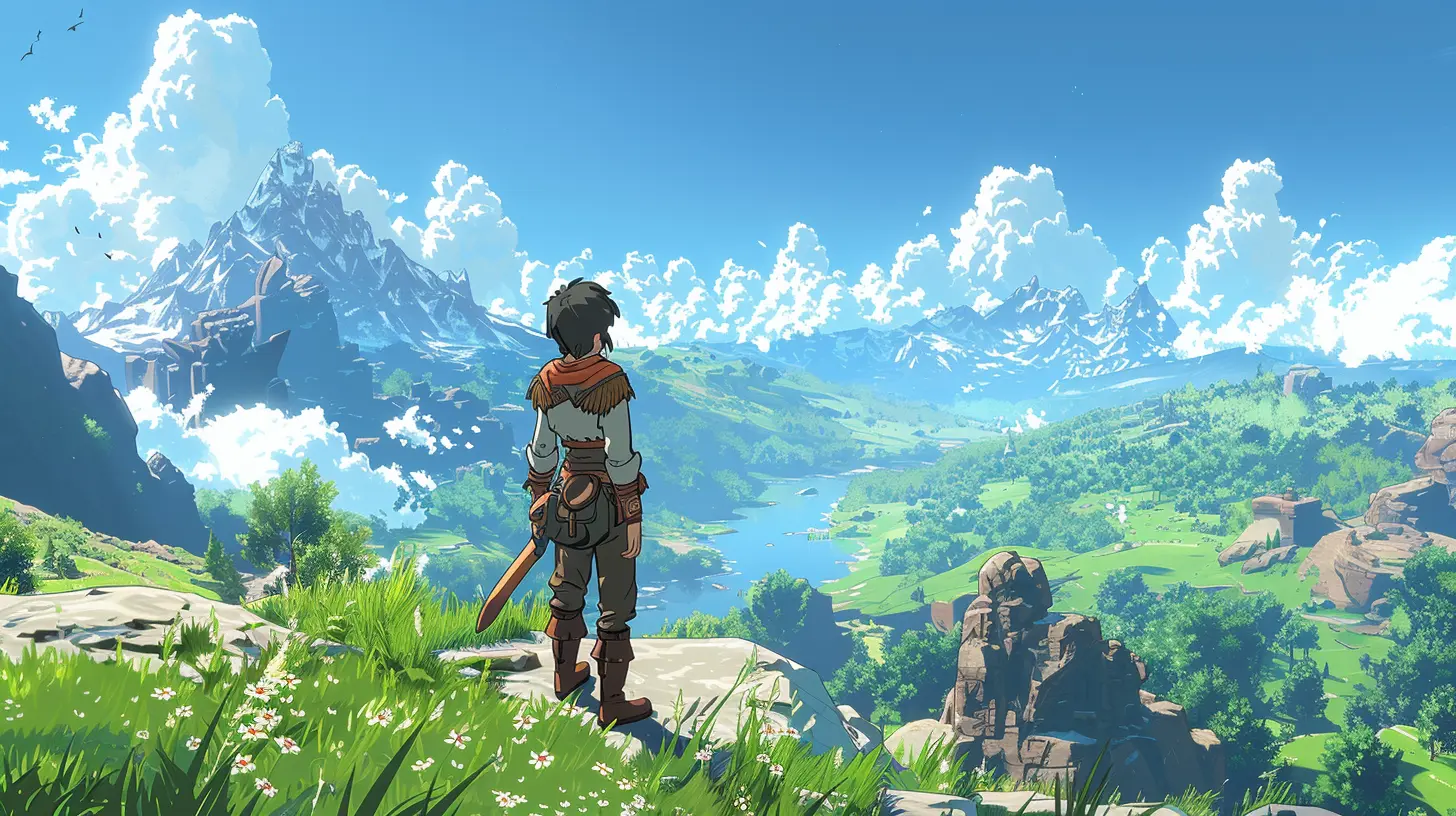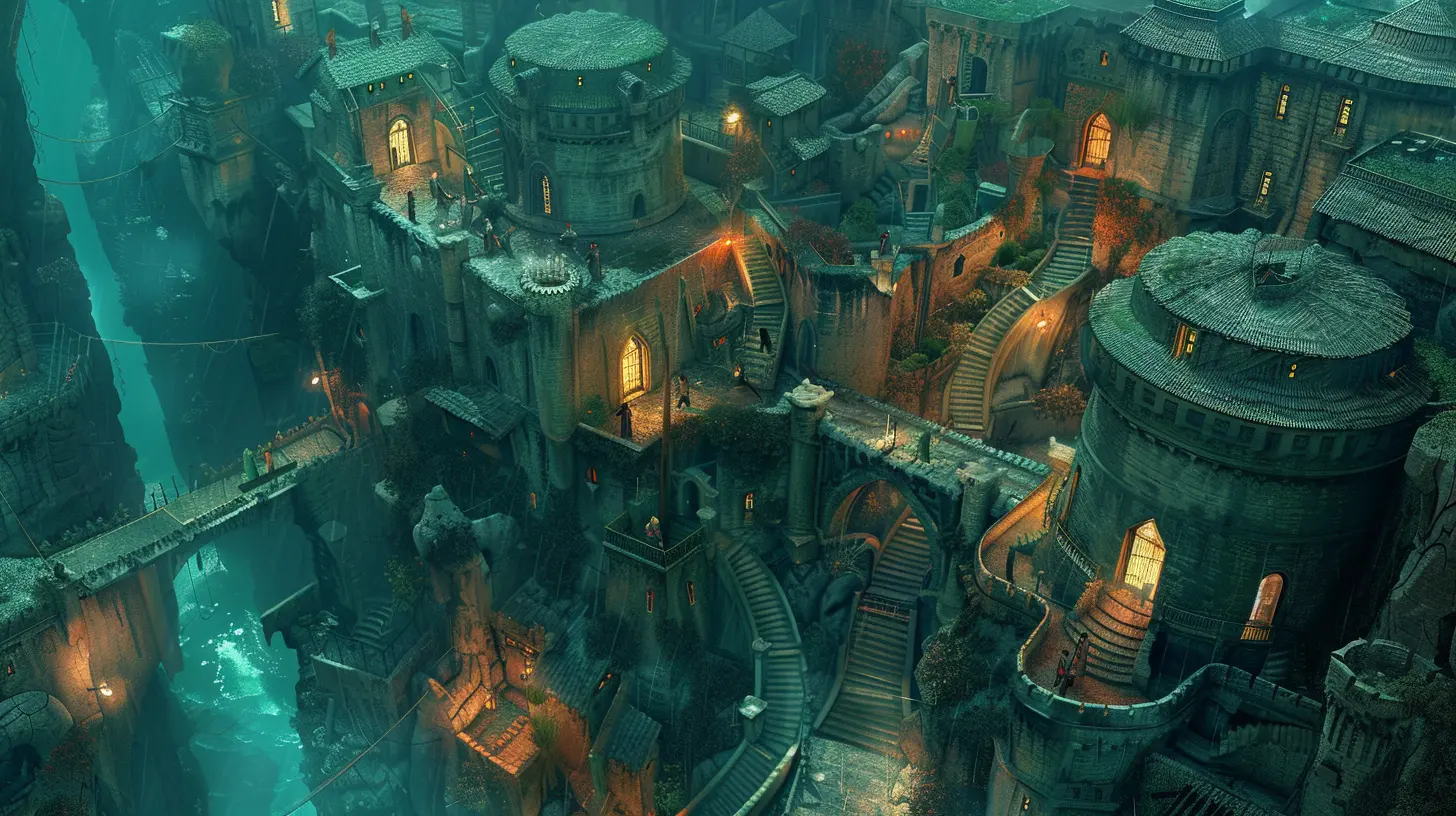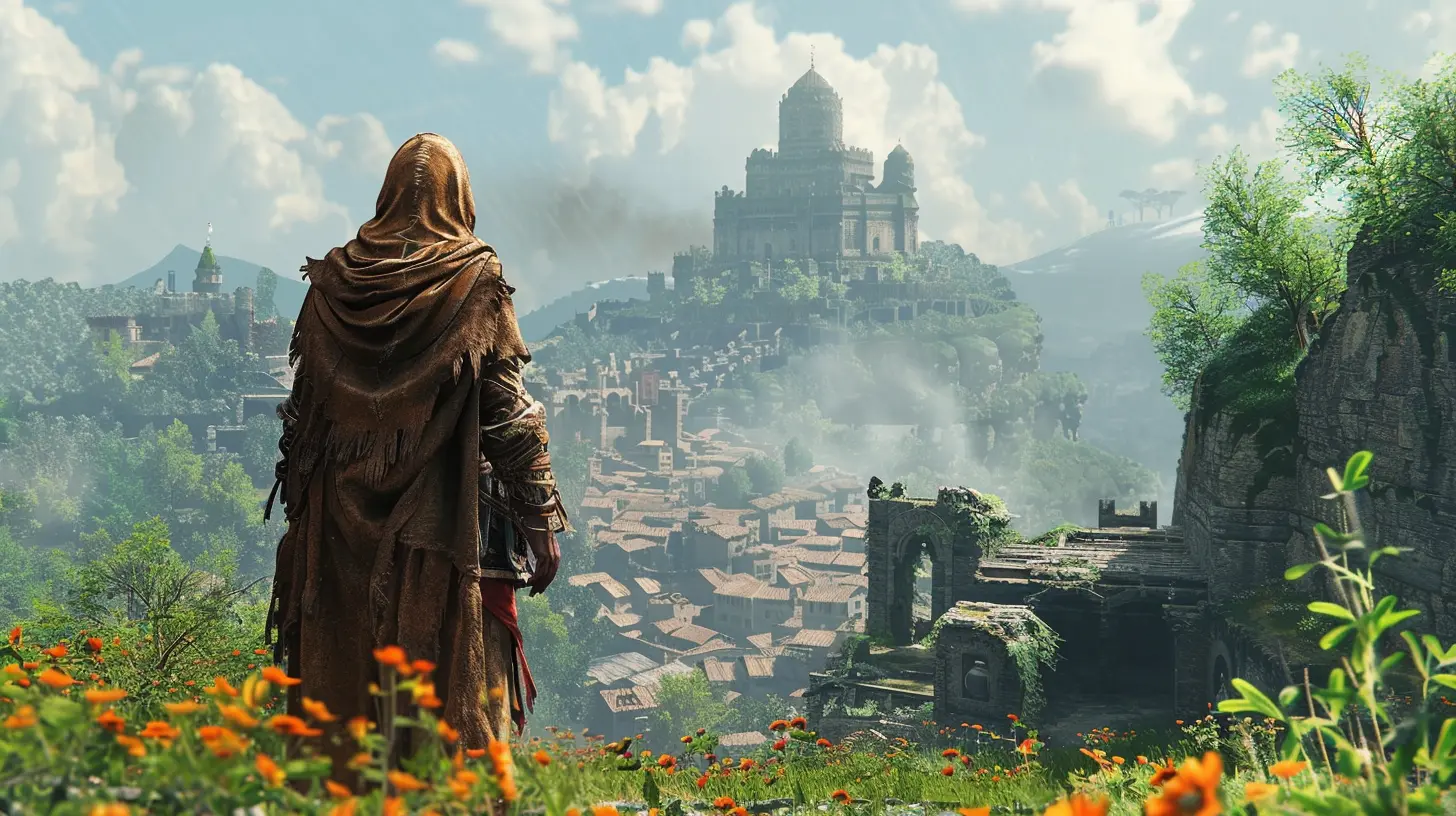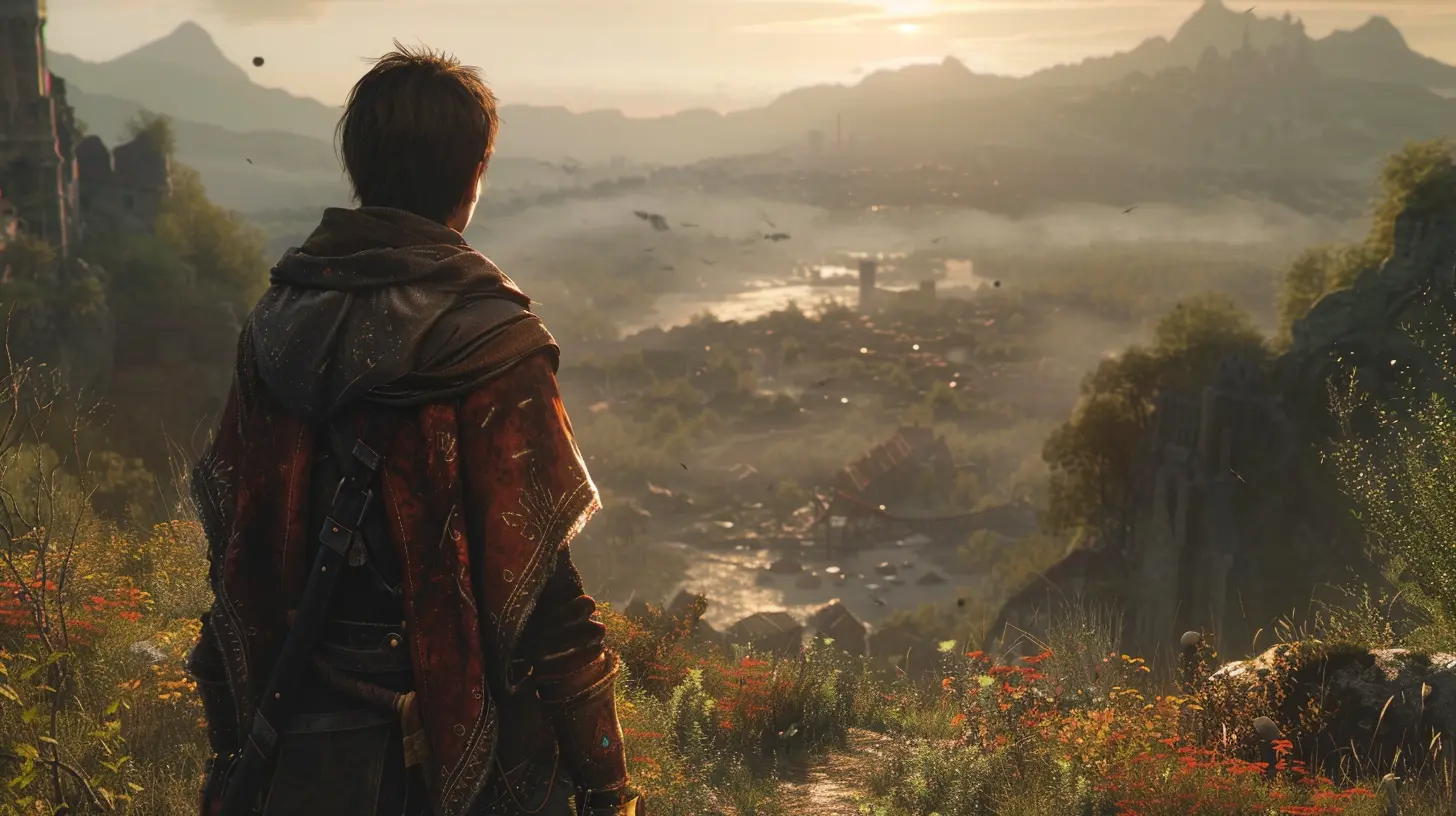The Role of Side Quests in Expanding Adventure Game Universes
11 August 2025
When you’re knee-deep in an epic adventure game—sword in one hand, potion in the other—have you ever felt the irresistible pull of a random side quest? You know, the one that has absolutely nothing to do with saving the world, but somehow ends up being more memorable than the main mission? Yup, we’ve all been there.
Let’s be honest: side quests are the real MVPs of adventure games. They might seem like diversions, but in reality, they are the heart and soul that breathe life into these vast, pixelated worlds. Strap in, because we’re about to unravel how side quests don’t just fill time—they expand, deepen, and supercharge game universes in ways main quests could only dream of.

What Are Side Quests, Really?
Before we go all-in, let’s get on the same page. Side quests, also known as optional quests, are tasks or missions that aren't part of the central storyline. They’re often found lounging in the corners of a game map, passed along by a chatty NPC, or hiding behind a suspiciously glowing object.Some are silly. Some are soul-stirring. Others are just straight-up bizarre (we’re looking at you, Yakuza series). But no matter the type, they all have one thing in common—they enrich your adventure.
Side Quests: The Secret Sauce of World-Building
Think of your favorite open-world games. Now, imagine them without side quests. Pretty bland, right?Side quests are the breadcrumbs that lead players into the nooks and crannies of a game world. They're the seasoning that turns a decent meal into a feast. Want to know more about a forgotten town? Help a local find his lost cat. Curious about an ancient war? Maybe a wandering bard has a tale to tell—right after you fetch him a rare flower.
These bite-sized missions paint the picture of the world beyond the headlines of the main storyline. They introduce cultures, histories, and characters you’d never meet otherwise. So while the main quest is the spine, side quests are the muscles and veins that give the game life, personality, and emotion.
Character Development on Steroids
Main quests usually revolve around big-picture stuff—saving kingdoms, defeating evil overlords, or stopping a plague. They give us the ‘what’. But side quests often give us the 'who' and 'why.'Through side quests, you get to see your character interact in different, often quirky or touching ways. Maybe you help a ghost find closure, or teach a farmer to dance. These moments add layers to both the protagonist and the people around them. They make characters feel real, not just code and pixels.
Plus, side quests can offer branching dialogue choices that shape your reputation—are you a noble hero or a ruthless bounty hunter? These little detours let you explore the emotional range of your character without the pressure of the main narrative.
The Joy of Exploration
There’s something magical about wandering off the beaten path. Side quests are like hidden Easter eggs for the curious-minded. They reward exploration not just with loot, but with stories, scenery, and surprises.Ever stumbled upon a hidden cave in Skyrim or a bizarre mystery in Red Dead Redemption 2? You probably weren’t even looking for it—but bam! You’re knee-deep in a kidnapping plot or helping a vampire family solve sibling rivalry. This freedom to roam, to accidentally trip over adventure, is what turns a good game into an unforgettable one.
In short, side quests turn the map into a playground instead of just a level path to follow.
Something for Everyone
Let’s be real for a sec—not all of us dig fighting dragons or chasing down bad guys 24/7. Some players live for the romance arcs, crafting side missions, or mock cooking competitions. That’s the beauty of side quests—they cater to different playstyles and interests.Want to collect all the herbs in the region? There’s a quest for that. Into dark, detective-style mysteries? You’ll find those too. Whether you’re a hack-and-slash enthusiast or a story nerd, side quests let you play your way.
And hey, sometimes you just want to fish for three hours, and that’s totally valid.
Unlocking Lore & Hidden Histories
You know those tiny details that make you go, “Wait, what?”—like why that ruined temple exists, or how two kingdoms fell out long ago? Nine times out of ten, you uncover that juicy lore through a side quest.These mini-adventures often reveal backstories that weave into the main story later—or show you sides of the world that make everything feel more connected. Suddenly, that throwaway comment from an NPC or the weird statue outside town makes sense. It’s like pulling back the curtain on the wizard, and finding a full-blown origin tale hiding there.
And let's not forget how this adds replay value. One game might have a hundred different threads, each with its own reward and story impact. You never know when a side quest is going to blow your mind or even subtly change the ending.
Loot, Gear, and Shiny Rewards
Okay, okay, let’s talk loot. Sometimes you chase side quests not for the story, but for the sweet, sweet gear waiting at the end. Legendary weapons? Unique mounts? Fancy outfits? Yes, please.Developers often use side quests to give players access to custom or rare gear that can’t be found elsewhere. These goodies not only make your character look cooler but can also make gameplay smoother or more interesting.
And let’s face it—we all love a good glowing sword.
Side Quests = Value for Money
Triple-A games don’t come cheap. With how expensive games are getting, players want bang for their buck. Enter side quests: the secret weapon of game developers to add hours of content and justify that $70 price tag.A game with a decent storyline and a truckload of engaging side quests can keep players occupied for weeks, if not months. This helps build loyal fan bases, increases player retention, and cranks up replay value. Everybody wins.
Seriously, you ever try completing every Witcher 3 side quest? That’s a full-time job, and we’re not complaining.
When Side Quests Go Wrong
Let’s be fair—not all side quests are created equal. Some are chef’s kiss perfection, and others... not so much. You know the ones: fetch quests with zero plot, pointless grinding missions, or repetitive tasks that feel more like chores than fun.Game devs, take notes: players remember great side quests because they’re meaningful, not because they made us kill 50 goblins for a cabbage.
Still, even the “meh” side quests have their fans. Sometimes they’re just a way to relax or level up without thinking too hard. Not every mission needs to be earth-shattering.
Memorable Side Quests from Iconic Games
Wanna talk examples? Let’s go:- The Witcher 3 – “The Bloody Baron”: Honestly, better than most main quests out there. Twisted family drama, choice-driven outcomes, and serious emotional gut punches.
- Elder Scrolls V: Skyrim – “A Night to Remember”: You wake up from a magical bender with no memory of what happened. Shenanigans ensue. Classic.
- Mass Effect 2 – Loyalty Missions: Not just side quests—these are character-deep-dives that directly impact the finale.
- Red Dead Redemption 2 – “A Bright Bouncing Boy”: You help a mad scientist build a robot. Need we say more?
- Breath of the Wild – Almost every shrine: Technically optional, but they reveal so much about the world and reward your curiosity with both gear and lore.
These missions aren’t just extra—they’re essential to why these games are so beloved.
How Side Quests Shape Player Identity
Here’s where it gets real meta. The side quests you choose to do—or not—say a lot about you as a player. Are you someone who helps every lost soul and kitten? Or are you in it for the loot, skipping the fluff and making the hard calls?Side quests serve as a mirror, letting us play as our ideal selves, test boundaries, and get emotionally invested in the journey. They’re where we break away from the script and start writing our own stories.
Final Thoughts: Side Quests Matter—A Lot
So, next time you’re tempted to skip past that random NPC with an exclamation point over their head? Don’t. Talk to them. They just might lead you into the most memorable experience of the entire game.Side quests aren't just filler—they're the flavorful side dishes that make the gaming feast unforgettable. They're how game worlds grow, how players connect, and how stories become legendary. So grab that journal, saddle up, and get lost in the side roads. Who knows where they’ll take you?
all images in this post were generated using AI tools
Category:
Adventure GamesAuthor:

Leif Coleman
Discussion
rate this article
1 comments
Indie McCall
Side quests enrich narratives by deepening world-building and character development, inviting players to explore themes of choice and consequence, ultimately transforming a game into a personal journey.
August 20, 2025 at 5:01 PM

Leif Coleman
Absolutely! Side quests enhance narrative depth and player engagement, making every choice meaningful and personal.


